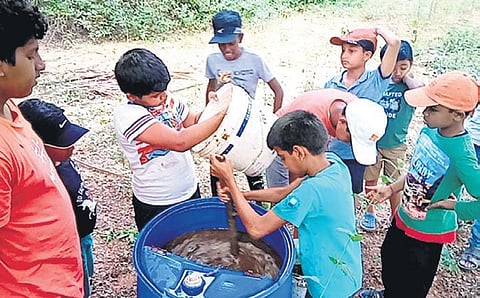

BENGALURU: He is a storehouse of knowledge on Indian trees, plants and herbs, and in his farm, which is nothing like the traditional setup, the flora grows wildly and naturally. Srivathsa Govindaraju, a software engineer-turned-farmer, started his farm 13 years ago with the intent of “respecting nature as it is and to understand how it functions”.
From teaching families to forage to providing forestry training to police in their bid to fight Naxalites, he has done it all. Now, he looks towards collaborating with educational institutions and teaching children about a number of vital issues plaguing the agricultural industry through sustainable farming.
“India is blessed with a fantastic resource pool of plants and trees that we are forgetting and neglecting. We need to do more research and understand our ecosystem to know how it functions, which is why I have set up this farm to be a biodiversity awareness centre” he told The New Sunday Express.
His farm, ‘Nature Inspires - Chiguru Ecospace’, at Singadasanahalli village near Magadi spreads across 13 acres. “It doesn’t please the eye and it looks wild. But it has a functioning ecosystem, which is something I work to retain,” he says.The farm has over 300 species of plants and trees, all either edible or used for medicinal purposes.
“I’ve kept many plants that used to originally grow on this land and also introduced a few species from other regions,” Srivathsa Govindaraju says. Though he still has conventional horticultural crops like coconuts and fruit trees, he also has a variety of plant species he terms ‘forgotten foods and healing herbs’, ranging from flowers that tickle the taste buds, seeds to make dyes, edible sweet cacti, eight varieties of basil, or simply traditional Indian plants.
Whatever he doesn’t grow, like rice and wheat, he sources from farmers living in the nearby village. One of the few species that is not native to India at his farm is Barbados cherry (Malpighia Emarginata), which naturally has one of the highest vitamin C content.
Though a former techie, Govindaraju comes from an agrarian background and a lot of what he learnt comes from foraging with his grandmother. “When I go out for a walk, I see food everywhere. It’s knowledge that is missing and that something we must strive to give to our children,” he says.He conducts workshops for children on organic farming. He also makes them understand the importance of going back to the roots of India’s agrarian history.